Fallout Shelter
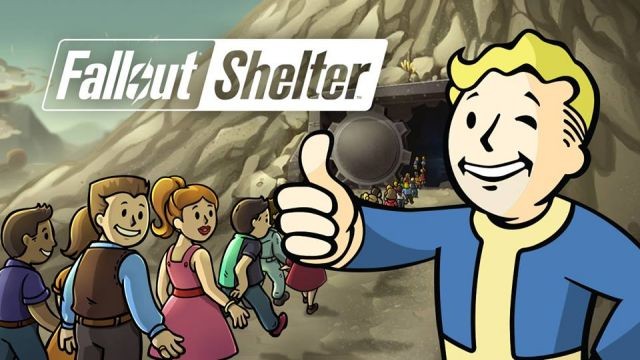
Perhaps the simplest way to describe Fallout Shelter is to equate it with the game SimTower. SimTower had you building skyscrapers to the heavens and carving out units inside for your sims to create a happy tower community. Fallout Shelter has you digging below into the ground to create a safe haven for your vault dwellers away from the wasteland. You play the role of the overseer; unseen in the game, and sadly they also did away with the overseer’s office. But all of the familiar Fallout universe lore is here: bottle cap currency, SPECIAL characteristics for your people, rad-aways and stimpaks. The game looks and feels like Fallout including the cartoon characters and the cold war era soundtracks. This review is based on the iPad version. If you have an iPhone 5 or older, I would find the lack of real estate challenging to maintain a vault of any significant size.
Regardless of your device, your vault is going to work principally on four resources: people, food, water, and power. To generate these, you’ll need to spend bottle caps on structures. People need housing, but housing needs power stations. In order to generate power, you must assign dwellers to work the power station. SPECIAL traits come into play as different structures require proficiencies of different people. Power stations, for example, are better staffed with people who have Strength. People, however, need food and water to survive so those pre-requisites must be there. Balancing all four options in the beginning of the game is delicate when you tend to overbuild or overpopulate your vault causing shortages. If the people can’t eat, they’ll lose health. If you don’t have enough water, your vault denizens become irradiated (how I don’t know, supposedly the vault keeps radiation out unless this is one of the many vaults in the Fallout universe that is defective). There are secondary structures that help address this. A radio station can be set up to attract people from the wasteland. Medical and science labs can make stimpaks and rad-aways to temporarily deal with any acute supply issues you might have. Structures can be “rushed” to speed up production and generate bonus bottle caps, but you run the risk of rad roach infestation or fires in the building. Too many calamities and your vault dwellers get despondent too.
You will have to chase some secondary structures, though, simply because you are always assigned three in game reward objectives. Some of them could ask you to train a few dwellers in a SPECIAL trait, sell some weapons, upgrade some structures, or explore the wasteland. Achieving objectives can reward you with caps or lunchboxes that contain what looks like trading cards. Some cards give core resources, or VIP dwellers, weapons or outfits.
The initial objectives are quite easy to achieve and you’ll open up numerous lunchboxes. As the game progresses, lunchboxes become far and few in between. That’s when Bethesda steers you towards in-game purchases. I have to say that I was tempted in the beginning to speed up the progress of my game. I didn’t like fighting off slaver raids with my fists and the one BB gun my explorer found. I also didn’t want to wait for ten vault dweller babies to be born and grow up just so I could build the next structure I wanted. But I was able to get up to a hundred dwellers in a few days – you just have to spend a few days to balance the four resources, steer the vault population in the right way (more on that in a minute) and let some time pass. Unlike popular iPad games (Game of War comes to mind), your vault doesn’t live on to be attacked and killed by opponents in an online world. You can comfortably return to the game some time later and things will continue to operate. I appreciated this part of Fallout Shelter the most. It didn’t make you pay and chain you to the game. You can even play the game offline without an Internet connection although the lunchboxes cannot be purchased offline.
One of the more interesting things about Fallout Shelter is increasing your vault population. You do this by matchmaking a man and a woman in the housing shelter so they fall in love. Once they do, the woman becomes pregnant and the dwellers are returned to you for whatever assignment you give them with one catch; the women are unable to fight off rad roaches or put out fires. After a few hours of time in real life, a baby is born and you’ll have to wait for the child to grow up whilst it consumes food and water. Although it’s tempting to only mate the best of your vault, you’ll want to mix and match to avoid inbreeding. Fallout Shelter has no issues with you using a baby three generations later to mate with someone in his or her grandparents’ generation but you can’t commit any kind of incest. This pushes you to periodically get new blood into the Vault, either through the lunchboxes or radio.
Characters with better charisma in their SPECIAL trait will fall in love quicker. But in general, I never really found a reason to build structures to enhance anyone’s traits. Instead, I acquired enough outfits to equip them to some level of proficiency. It was only when the in game reward asked me to build a gym and train people in Agility did I manage to do that. You get to discard one objective a day, though, and typically I removed pointless objectives like that. Once vault dwellers exceeded level 10, I found them to be pretty competent in defending the vault and doing whatever their assigned profession is.
There is an option to send your character out to explore the wasteland. This, of course, is not as fun as the proper Fallout franchise. You get some random statistics of what opponents your explorer has encountered and how much experience they are receiving. You can recall your explorer (how I don’t know, communications are supposed to be down) to collect any caps, outfits or weapons that he or she might have accumulated in their quest. This was the easiest way for me to acquire items that otherwise would come from lunchboxes eschewing the need for an in game purchase.
Fallout Shelter is an interesting game until you reach the fifty dweller mark. After that, the game gets easy and monotonous. By this time, you have a strong base of people generating core resources and the only thing you’re missing is a flow of bottle caps which the passage of time will give you from the structures you’ve built and the increase in level from your dwellers. You’re no longer micromanaging anymore. I had at least a third if not more of my dwellers at level twenty or higher. And every time they increased levels, I collected an equal amount of bottle caps. Now multiply this by two and money stops becoming an issue. Boredom sets in as you’re waiting for your structures to generate money whilst your people gain experience. There’s no incentive to move people to different professions (serfdom anyone?) and the utility of a water purification plant (expensive) compared to a water treatment plant (cheap) isn’t that much different.
This is when I started to take a peek into my vault only once a day for a few minutes. I had reached a plateau. Compare this to when I began playing Fallout Shelter, when I spent hours micromanaging the infancy of my vault. Bethesda would like you to continue chasing VIP vault dwellers, outfits and weapons, but I had enough to keep the vault running and no amount of rad roaches or slaver raids was going to overrun this vault. Maybe this is how Fallout’s dystopia lore was born – a bunch of overseers who were bored and started social experiments in their vaults.
Reviewed By: Lawrence Wong
Publisher: Bethesda Game Studios
Rating: 70%
——————————————————————————–
This review is based on a digital copy of Fallout Shelter for the iPad from the iTunes App Store.
 Game Over Online
Game Over Online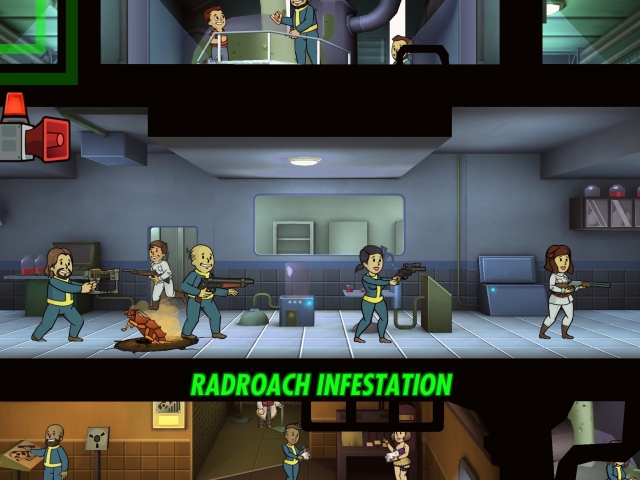
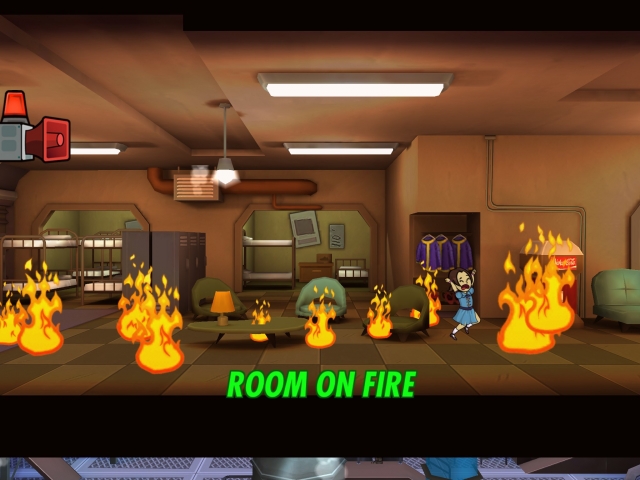
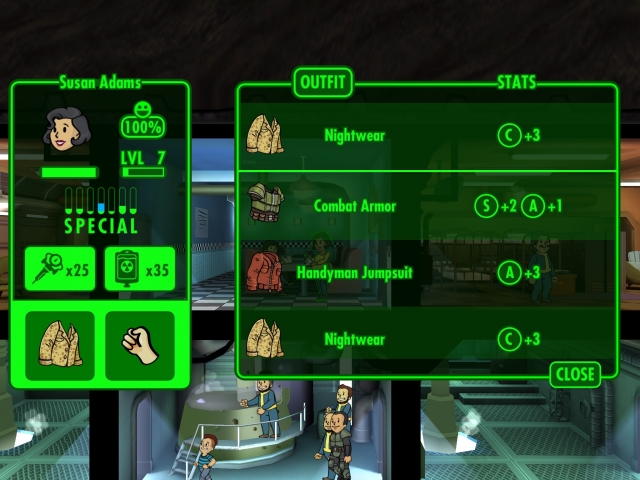
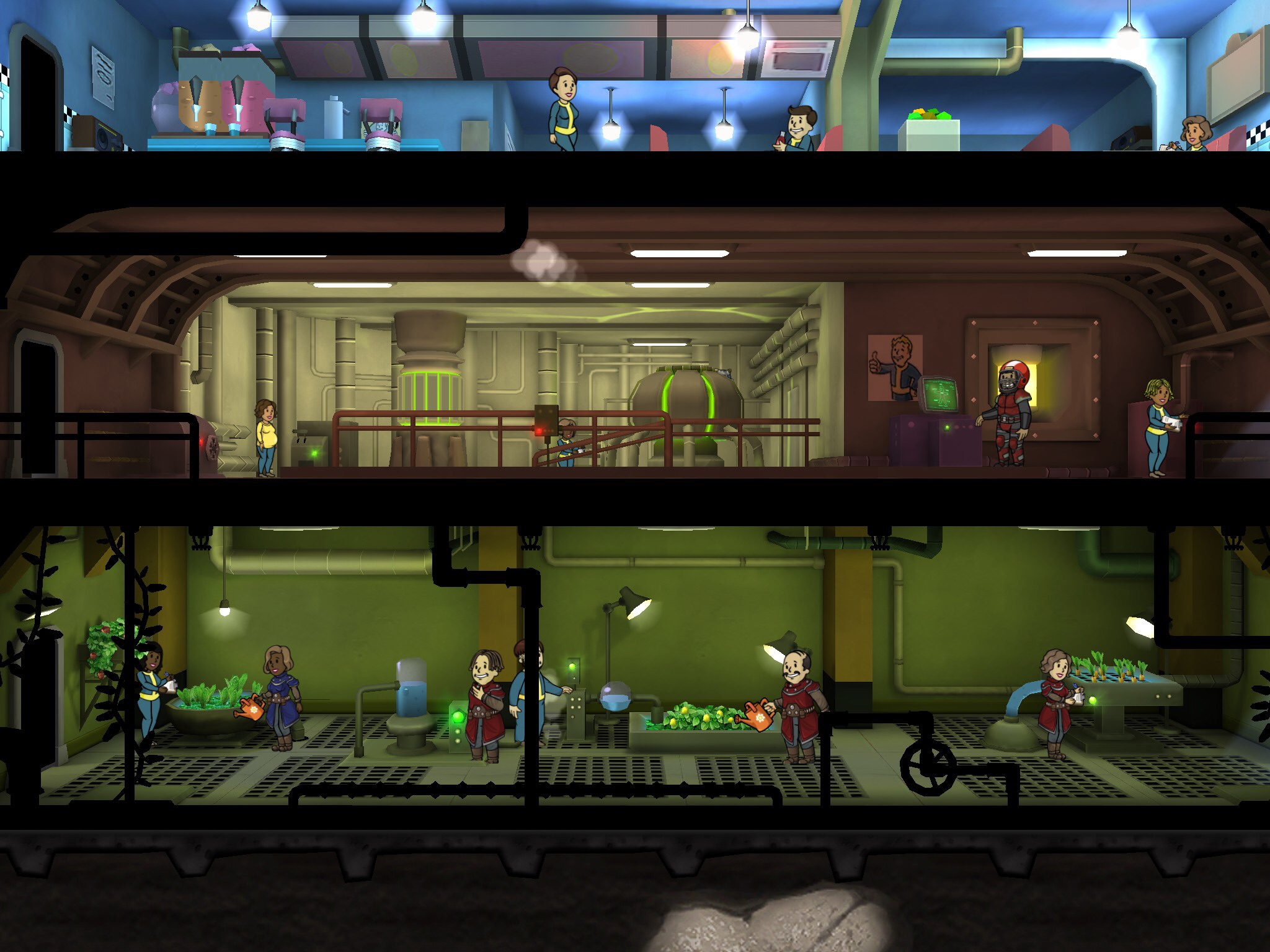
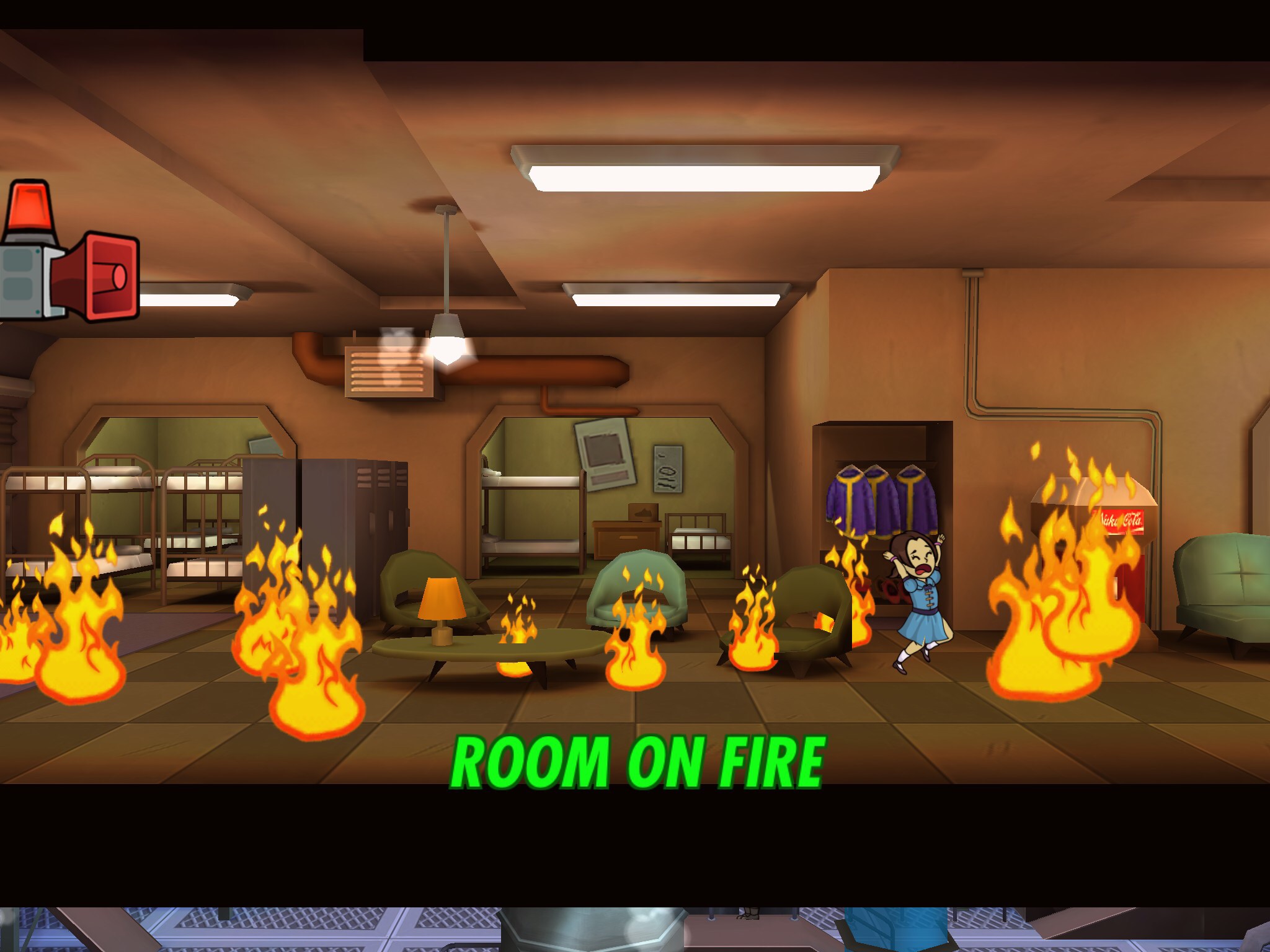
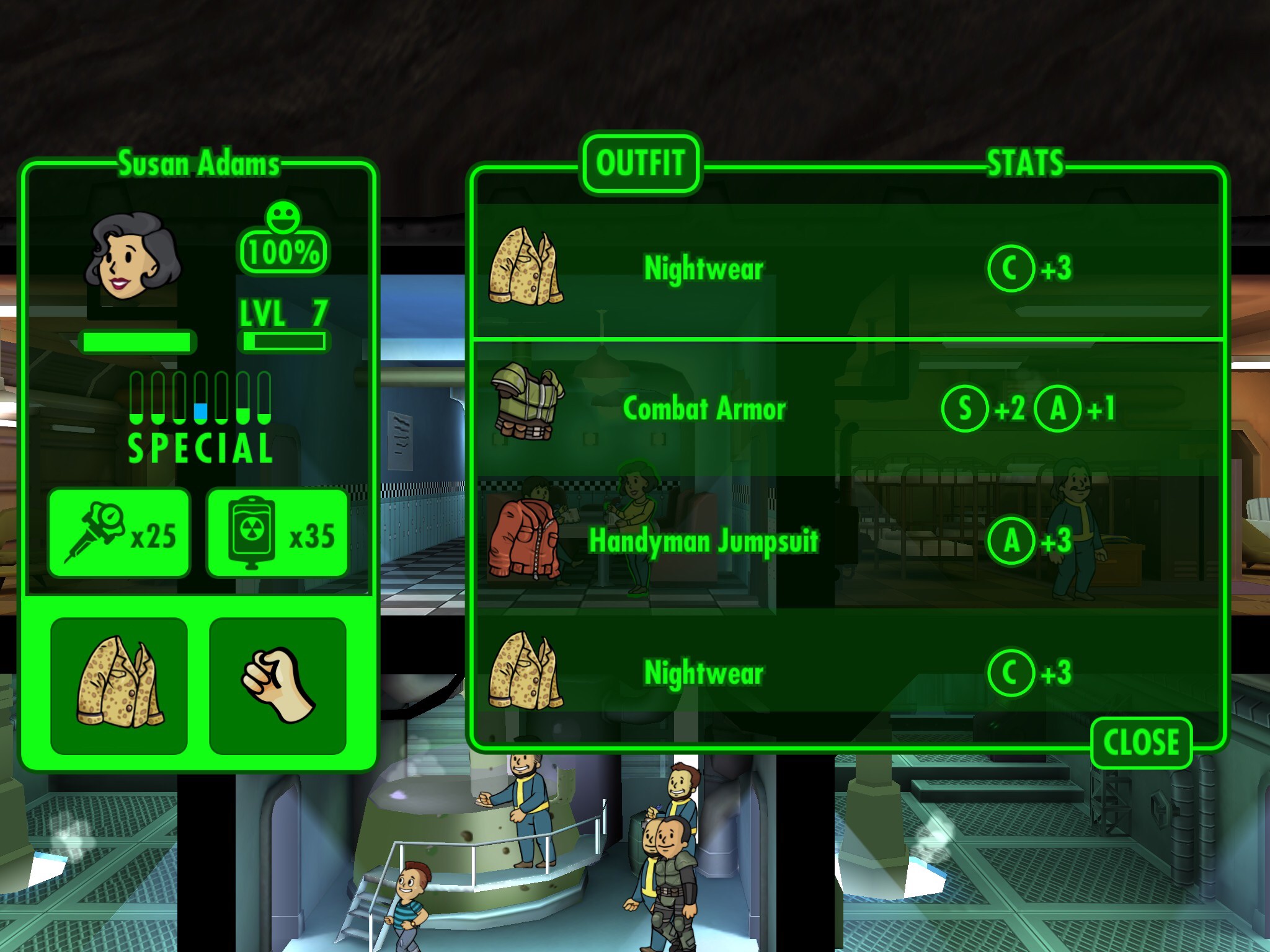
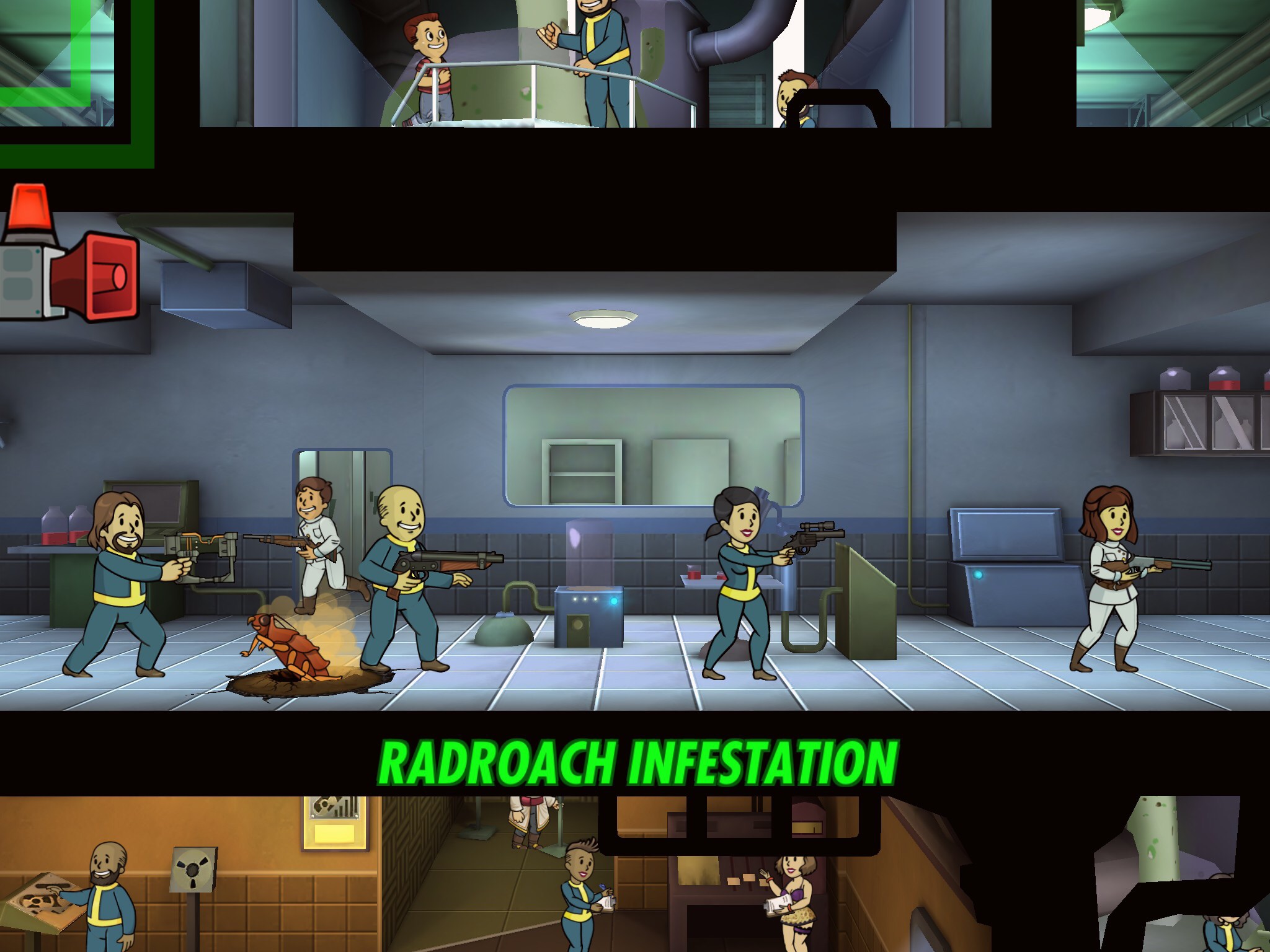

Hey fellas, I’m a nerd and HATE IOS. More to the point, when do we get this app elsewhere?